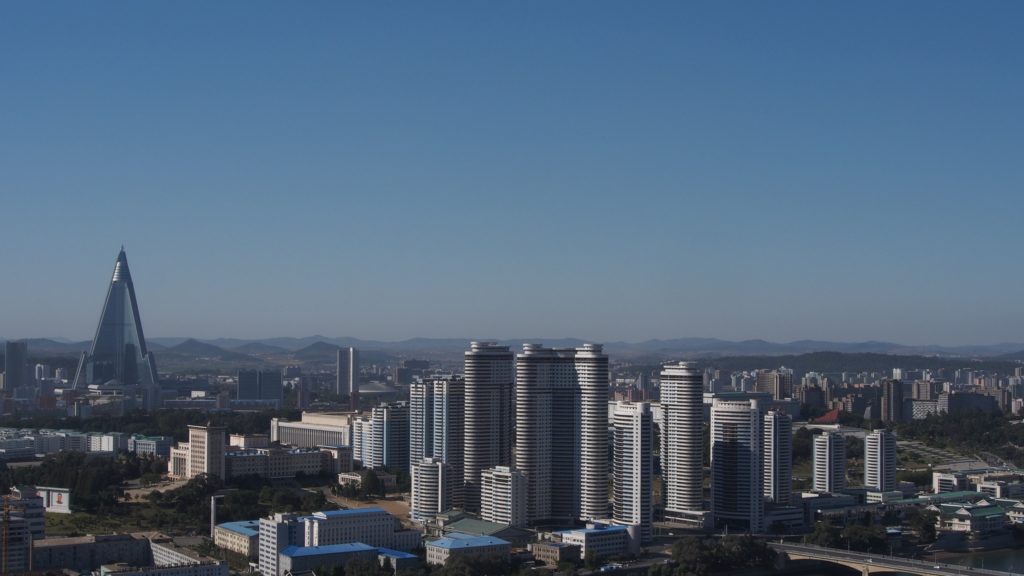The Peninsula
The Korea-China FTA and Economic Engagement with North Korea

By Troy Stangarone
Three months after announcing that they had reached a preliminary agreement, South Korea and China formally announced the conclusion of their free trade agreement (FTA) talks. The additional time allowed the two governments to finalize additional details to strengthen the agreement such as a standstill provision to preclude either country from increasing or imposing new duties on goods and services, as well as provisions in telecommunications and banking. However, the additional time also allowed the two governments to finalize provisions in the FTA as they relate to North Korea.
Under the Korea-China FTA 310 products produced in the Kaesong Industrial Complex will be eligible for either reduced tariffs or the elimination of their tariff upon the agreement entering into force later this year. If those products contain at least 60 percent content from either South Korea or China, they will be considered South Korean goods in the Chinese market.
The provisions in the Korea-China FTA are more extensive than those in other South Korean FTAs. For example, FTAs with the United States and the European Union only include provisions for the future consideration of goods from Kaesong, while the provisions in some of South Korea’s earlier FTAs are either more limited or include products that are not currently produced in the Complex. The issue of tariff reduction is a key for exporting goods from Kaesong in general and improving the Complex’s competitiveness in the Chinese market. In the case of North Korea, because it is not a member of the World Trade Organization, goods that are not recognized as South Korean often face a country’s highest tariff level more generally around the globe.
While the agreement has improved access for goods from Kaesong, there are four issues to consider in regards to the FTA’s potential impact on South Korean economic engagement with North Korea:
Will the FTA enhance the attractiveness of the Kaesong Industrial Complex for foreign firms?
One of the key policy goals for South Korea since North Korea withdrew its workers from Kaesong and the complex was closed for nearly half a year in 2013 has been to attract international investment to help insulate the Kaesong from the political vagaries of inter-Korean relations. Access to China’s market should make Kaesong more attractive to foreign firms in the long-run, but in the short-to-medium term, issues related to communications, the internet, and other standards that do not yet conform to international norms will likely continue to inhibit interest in the complex. However, Kaesong should become more attractive to Chinese firms, especially those with experience in North Korea.
How willing or able is North Korea to allow Kaesong to expand?
One underlying question regarding the benefits of the provisions in the Korea-China FTA is the willingness or ability of North Korea to allow activity at Kaesong to expand? Prior to the May 24 sanctions, one complaint among some firms in Kaesong was that North Korea had been unable to provide the workers needed to expand. In part, this is an issue that much of the available labor in the Kaesong area has already been tapped, but it is also a question of the willingness of North Korea to allow workers to migrate to Kaesong to meet the complex’s demand.
Additionally, while Kim Jong-un has promised to improve the livelihood of the North Korean people, it is unclear how North Korea will achieve that goal through the Kaesong Industrial Complex. Since he has risen to power, the complex has faced its most significant challenge and efforts to internationalize the Kaesong have been slowed by North Korea’s reluctance to take steps in areas such as supplying internet and cell phone access that are needed to expand the zone.
What happens to the May 24 sanctions?
There has been growing debate in South Korea about whether to maintain or lift the May 24 sanctions. The sanctions as they currently stand prohibit new investments in Kaesong, including those to expand existing operations. North Korea’s growing nuclear program makes these sanctions difficult to lift, but until a change in inter-Korean relations occurs that would allow for loosening of the sanctions they will limit the ability of firms to make new investments in the complex and take advantage of the benefits of the Korea-China FTA.
Are China’s special economic zones included in the Korea-China FTA?
This is one of the more interesting aspects of the FTA. While the details of any tariff cuts for goods from China’s special economic zones in North Korea going to South Korea are not yet available, there are reports that the agreement includes provisions to discuss more industrial complexes in North Korea and for other outward processing zones. Depending on how these provisions are managed, they could expand the production possibilities at Kaesong or other complexes. For example, with additional complexes included, a supply chain could be developed in North Korea where each zone provides parts to another. The content requirements would then not necessarily need to be met at any one zone, but rather though content provided in each zone. As the zones became more interconnected, they could provide additional political stability as shutting one zone would impact production in another. This could be one of the more interesting ways to internationalize Kaesong and shield it from inter-Korean politics.
Troy Stangarone is the Senior Director for Congressional Affairs and Trade at the Korea Economic Institute of America. The views expressed here are his own.
Photo from Clay Gilliland’s photostream on flickr Creative Commons.
